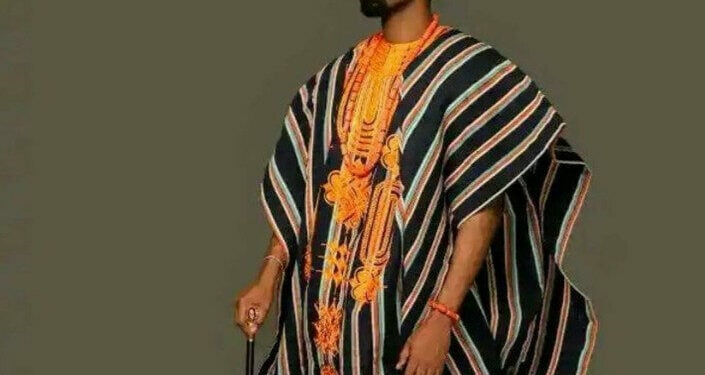In the refined world of African fashion, where tradition and modernity often converge in delicate tension, Odeshola Mutiu Adeshina, Creative Director of Odesbaba Couture, has consistently distinguished himself as a custodian of heritage and a sculptor of luxury.
His recent masterpiece, OYAATO, is both a reverent nod to Yoruba ancestry and a bold statement of contemporary design, affirming his stature as one of the foremost voices shaping the future of African sartorial expression.
OYAATO is a meticulously tailored three-piece agbada, fashioned from aso-oke, the age-old hand-woven textile that has long stood as a symbol of prestige within Yoruba culture.
Aso-oke, whose weaving techniques are passed down through generations, carries profound significance. Traditionally reserved for weddings, coronations, and rites of passage, the fabric is a living archive of Yoruba identity.
Each stripe, motif, and colour combination bears layers of meaning—often denoting status, community, or celebratory milestones.
By selecting aso-oke as the foundation for OYAATO, Odeshola not only honours a textile steeped in history but also underscores its enduring relevance in a world eager for authenticity.
His interpretation, however, is nothing but static. Through exquisite embroidery in radiant hues, strategically laid across the flowing agbada, he reimagines the fabric as a canvas of both heritage and innovation. The embroidery, intricate yet commanding, elevates the ensemble from ceremonial wear to a luxury piece worthy of international acclaim.
A critic’s eye would observe that Oyaato balances restraint and grandeur with remarkable precision. The striped aso-oke fabric, dignified in its minimalism, is brought to life by bold embroidery that injects vibrancy without overwhelming the design. The trousers, equally adorned with embroidery at the hems, create cohesion, while the cap completes the trinity of Yoruba masculine regalia. The styling—paired with coral beads, a walking stick, and leather footwear—anchors the look in regal masculinity.
In an era dominated by fleeting fashion trends, Oyaato is an assertion of permanence. It reminds the discerning observer that African luxury does not imitate but defines its own path. By graciously employing aso-oke, Odeshola not only preserves a traditional art form but dignifies it, positioning it within the global narrative of high fashion. His craftsmanship is not an attempt to modernize heritage by diluting it, but rather to reinterpret it with finesse, allowing it to thrive in contemporary settings while remaining true to its roots.
As fashion critic, one must commend the subtle yet profound message Oyaato conveys; that luxury is not only in the rarity of fabric or precision of tailoring, but also in the richness of cultural memory. This creation, true to its Yoruba name which means “different” or “distinct,” redefines agbada not as attire for the past, but as a timeless statement for the present and future.
Certainly, with Oyaato, Odeshola Mutiu Adeshina reaffirms Odesbaba Couture’s position as a vanguard of cultural luxury. He reminds us that to wear aso-oke is not merely to be clothed, but to embody history, prestige, and identity—all exquisitely tailored into the elegance of modern African fashion.



